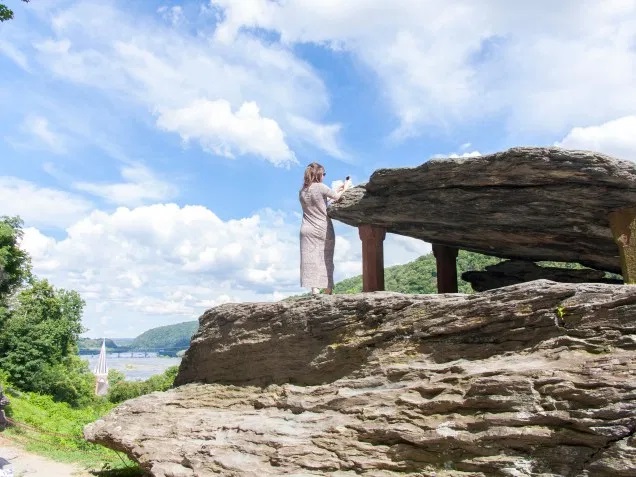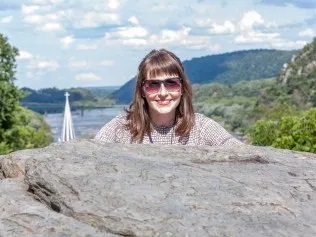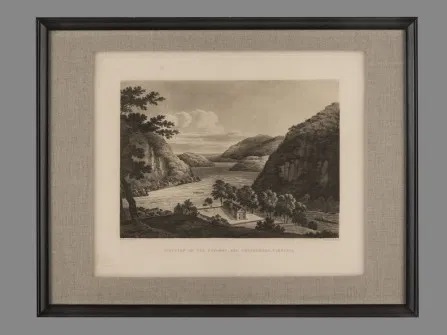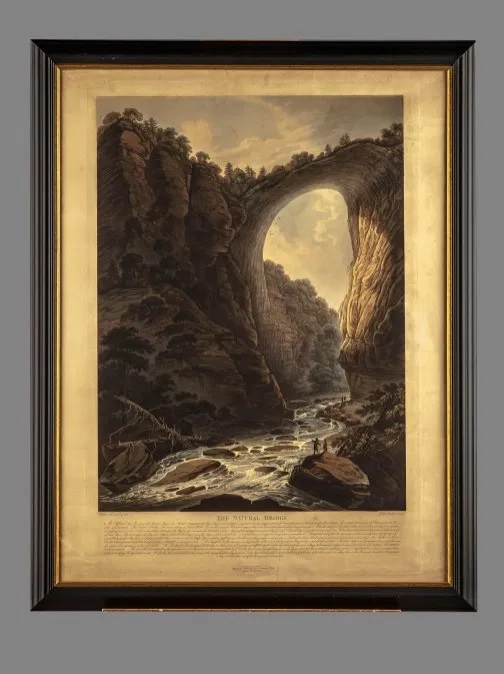On the Great Wagon Road with Katie McKinney
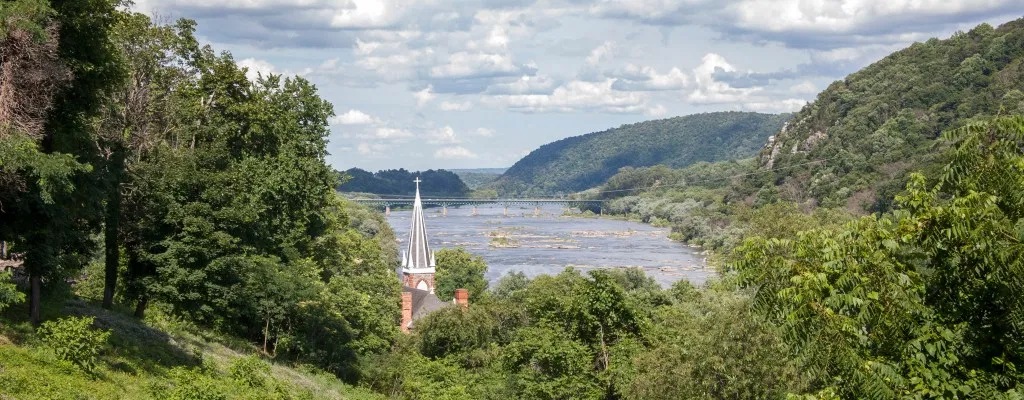
On the hillside above Harper’s Ferry: The original sketch for Junction of the Potomac and Shenandoah was likely taken from a vantage point further downhill.
 Katie McKinney is our most recent Continuing Education Scholarship recipient in the Museum of Early Southern Decorative Arts (MESDA) Summer Institute. A graduate of the Winterthur Program in American Material Culture, Katie has held numerous internships, fellowships, and professional positions related to American decorative arts. Presently, she is the Americana Foundation Intern at Colonial Williamsburg where she is responsible for conducting research on objects in the graphics collection. Without the scholarship from the Trust, she would not have been able to attend.
Katie McKinney is our most recent Continuing Education Scholarship recipient in the Museum of Early Southern Decorative Arts (MESDA) Summer Institute. A graduate of the Winterthur Program in American Material Culture, Katie has held numerous internships, fellowships, and professional positions related to American decorative arts. Presently, she is the Americana Foundation Intern at Colonial Williamsburg where she is responsible for conducting research on objects in the graphics collection. Without the scholarship from the Trust, she would not have been able to attend.
We asked Katie a few questions about her experience at MESDA’s Summer Institute and the benefits of traveling in the footsteps of artist William Roberts on the Great Wagon Road, which spans from Philadelphia to North Carolina. Here is what she had to say:
Q&A
DAT: What were your expectations entering Summer Institute? Has the experience met or exceeded those expectations?
KM: I was excited and honored to be selected to participate in the 2017 MESDA Summer Institute and grateful to be awarded the Decorative Arts Trust Scholarship. In terms of expectations, I’d have to say they were pretty high. Last summer, I was able to attend the students’ final presentations and saw the caliber of work that was produced in just four weeks. They were all very impressive. For my own experience, I expected to work hard, learn about the material culture of a region with which I was not very familiar and to be challenged by the staff.
As we finish up this final week, my experiences in the program have definitely exceeded those expectations. The MESDA staff and Dr. Carroll Van West are inspiring educators. They are so giving to the students, and it is evident that they want to see us do well, both during our time in the program and as we move forward in our careers.
DAT: What was the overall impact of traversing the Great Wagon Road during the field study? Any highlights?
KM: Our field study was incredible. The Great Wagon Road was a real blind spot in my education and professional career. Each of the locations we visited contributed to my understanding of the history of material culture along the Great Wagon Road. We also met with people who have incredible knowledge of the region like Nick Powers (Museum of the Shenandoah Valley) and Jeff and Beverley Evans (Jeffrey S. Evans & Associates) who opened their homes to us and shared their wonderful collections of local material. I think that our day in West Virginia with Matt Webster (Colonial Williamsburg Foundation) was a standout. One of the most moving experiences was our visit to Harewood in Jefferson County, West Virginia, which has belonged to descendants of George Washington’s family for generations. The family has carefully maintained the house and collection. It is a time capsule of American history and material culture.
DAT: Inspired from your time as a Curatorial Assistant at Monticello from 2011-2012, you approached MESDA with the intention to research the watercolor painting The Junction of the Potomac and Shenandoah Rivers by artist William Roberts. Have you stuck with this topic? Made any exciting discoveries?
KM: Yes, I have stuck with my original topic, and it keeps expanding. I was very excited to work on the art of William Roberts, an artist about whom very little was known, but whose work once hung at Monticello. I’ve made some very fascinating discoveries this summer. I look forward to sharing more of the research in my Summer Institute presentation and paper, and plan to continue working on this topic in the future.
Junction of the Potomac and Shenandoah Rivers William Roberts. London, Great Britain, ca. 1808. Watercolor, pencil, and ink on paper. Museum of Early Southern Decorative Arts.
Junction of the Potomac and Shenandoah Rivers William Roberts. London, Great Britain, 1810. Aquatint and line engraving on paper. Museum of Early Southern Decorative Arts
At this point in SI, have you benefited from specific experiences or information that will impact your work at CW?
KM: Definitely. This summer’s topic opened my eyes to a region that I had not previously studied in great depth. As the Americana Foundation Intern in American Graphics, I work with maps, prints, and works on paper. Working with maps in the course really helped to further develop my understanding of the importance of geography on regional settlement patterns and transportation. Even after just the few weeks of the Institute, I definitely look at maps very differently. The fact that MESDA owns Roberts’ work in three different stages of the printmaking process has also taught me important lessons about the artistic process and allowed me to work with objects that normally don’t survive together. I hope that I can approach my work at Colonial Williamsburg with a broader mind and sharpened research skills as a result of this experience.
We are truly honored to underwrite continuing education opportunities like Katie’s for emerging decorative art scholars and professionals. The Trust remains immensely grateful to donors who make opportunities like the Continuing Education Scholarship possible. If you would like to contribute to the our Education Fund and support innovative scholarship like Katie’s you can do so by following this link.
About The Decorative Arts Trust Bulletin
Formerly known as the "blog,” the Bulletin features new research and scholarship, travelogues, book reviews, and museum and gallery exhibitions. The Bulletin complements The Magazine of the Decorative Arts Trust, our biannual members publication.








